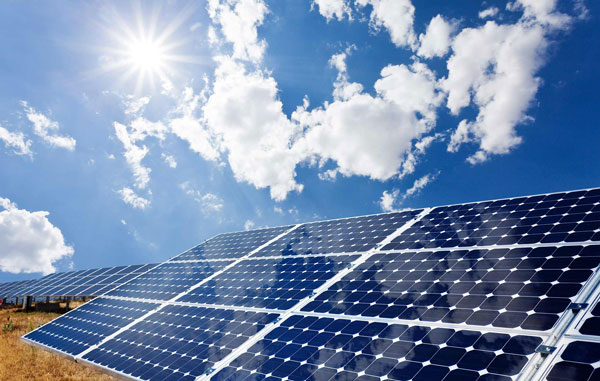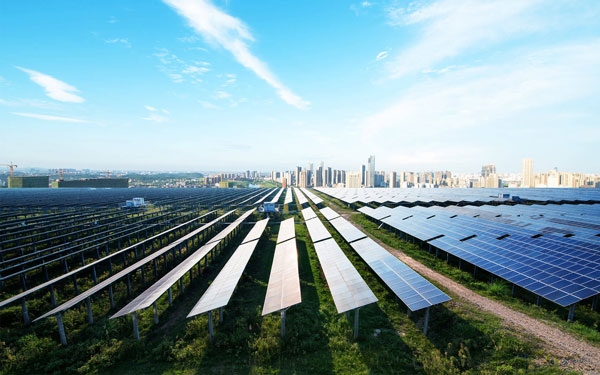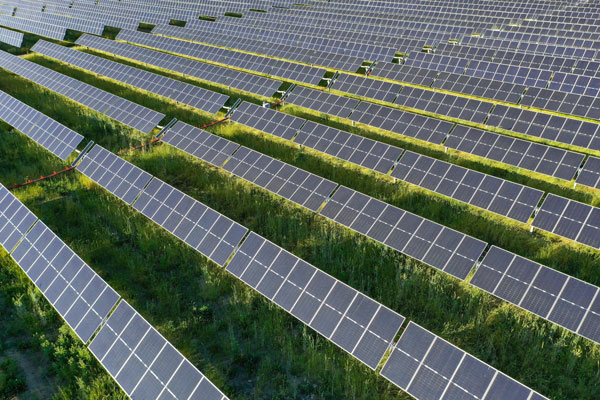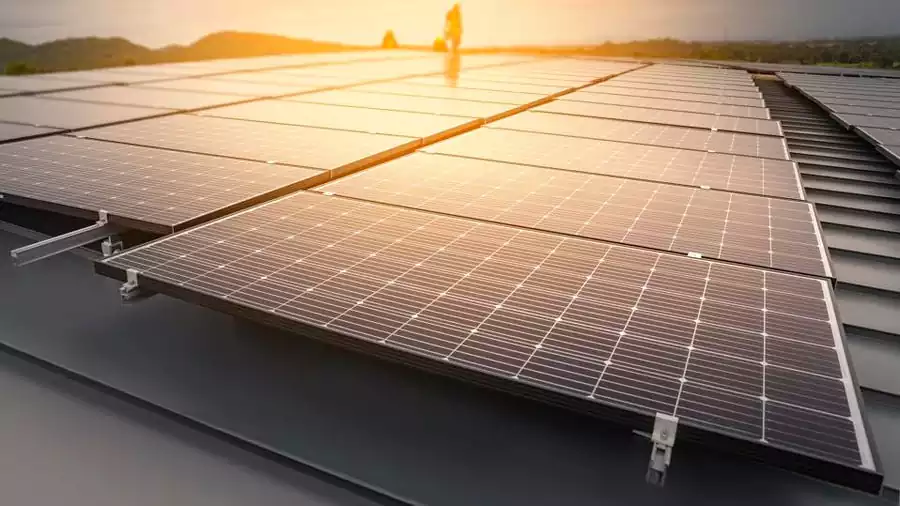Optimal Panel Placement
To get the most out of your solar panels, their placement is critical. Solar panels should be oriented in the best direction to collect as much sunlight as possible each day. In the Northern Hemisphere, solar panels face due south, while in the Southern Hemisphere, they appear almost due north. Tilt angle is also important and should be set to a tilt that corresponds to the latitude of the location where the solar panels are installed. However, a location at 40 degrees latitude will see the most benefit if it is tilted to an angle of approximately 40 degrees.
Tilt Angle
The efficiency of solar panels is highly dependent on the tilt angle. The optimal tilt angle is approximately the geographic latitude. Changing the angle from year to year and from season to season can increase energy output - lowering the slope by 15 degrees in the winter and increasing the slope in the summer to capture more solar radiation.

There's more to solar panel efficiency than meets the eye. Local environmental factors also have a significant impact on how efficiently panels generate electricity in your area. Areas with strong winds are best served by installing panels at a lower angle so that wind loads are less and the panels are not damaged. Potential shading from nearby trees or buildings must also be considered, as this can result in a loss of up to 25% in output. This problem can be solved by careful placement to avoid such shading or thinning out the growth each year.
Using Tracking Systems
Utilizing solar tracking systems can help improve the performance of solar panels, allowing them to follow the sun's position in the sky. Dual-axis trackers that rotate on both azimuth and elevation axes can increase power generation by up to 45% compared to fixed trackers. But it comes at a higher cost - not only in upfront costs, but regular maintenance is also important in the long run, which must be balanced against the potential gains from better energy collection.
Grid Maintenance and Cleaning
Even a thin layer of dust, dirt or water droplets can reduce the efficiency of your solar panels. Increase productivity by up to 5% -10% with regular cleaning Dust Storms If you live in a place like the Middle East that faces dust storms or dusk storms, your solar panels may need to be cleaned monthly. Using an automatic cleaning system in your dust collection equipment can keep them in optimal operating condition without the need to manually clean the system.
Regular Cleaning Schedule
Consistent cleaning does play a major role in the upkeep of an efficient solar panel system. If dust, pollen and other grime are allowed to accumulate on the panels it will decrease their output by a stunning amount. It has been demonstrated in studies that individual panels can lose more than a fifth of their efficiency if cleaned only once per month for locations situated dry or semi-dry climates.
Deciding when to clean
Cleaning should be done as and when necessary, depending on local environmental conditions. But solar panels located in dusty areas like deserts might need to be cleaned weekly, whereas those positioned within urban or forested environments could get by with bi-monthly cleaning. With the help of sensors that monitor dust accumulation or yield rate, clean on time to reduce cleaning schedule participation.
Techniques and Products for Cleaning
It is crucial to make use of appropriate materials and methods so that you avoid impairment to the panels. By using soft brushes and biodegradable soap to avoid scratching, as well as the reduction of chemical buildup if used repeatedly over time. Do not use high pressure water jet as it can damage the solar cells. A pragmatic approach is to rinse with low-pressure water and perform few manual cleanings.
Automated Cleaning Systems
With larger solar facilities, automated cleaning systems are a relatively low-cost solution. They consist of robotic arms or automated brushes to clean the surface without any human involvement, leading to reduced manpower costs and consistent cleaning. Designed for use in high-dust regions, they work quite well at keeping performance as close to optimal levels you can get.
Impact on Performance
Having a periodic cleaning routine can ensure that solar panel energy output either remains the same as its initial performance or even improves. Proper maintenance not only increases efficiency but prolongs the life of solar panels. A solar panel that has been properly maintained will perform over 90% efficiency even after 20 years, whereas one not cleaned regularly can drop below 80%.
Seasonal Adjustments
You will be able to book time slots online, and seasonal adjustment of the panels can improve power generation. The descending nodes absorb solar energy for northern platforms. Since the sun does not remain constant throughout the seasons, the optimal angle for the panels in the summer will not be exactly the same as in the winter. You can maximize the capture of winter sunlight and minimize it in the summer by tilting accordingly.
Calculating the Optimal Angle
To get a rough idea of the optimal tilt for each season, calculate based on your latitude. Generally speaking, subtract 15 degrees (in the summer) and add 15 degrees (in the winter) from your latitude. With an installation latitude of 35 degrees, you must tilt the panels about 20 degrees in the summer, while in the winter, they must be tilted about 50 degrees.
Automatic vs. Manual Adjustment
Manual operation may be possible in small installations. This means that your panels must be physically positioned as the seasons change. For larger systems, or if you need tracking 24 hours a day/year with optimal convenience and precision, an automatic tracking system can adjust your tilt/direction based on the movement of the sun.
Pros and Cons of Seasonal Adjustment
With seasonal adjustment, energy production can be increased by 10-15% over fixed installations. These efficiency savings will translate directly into a return on your investment. As we know from testing in heavy snow conditions, when there is more solar power to harvest, it can also naturally shed some of the accumulated weight and free up space for continued output.
Implementation Strategy
This requires a deep understanding of the local climate and the angle of the sun in your area. There are tools and apps that can provide very detailed sun angle data, and some even suggest scheduling automatic adjustments for you. Incorporating these tools into a regular maintenance regime will help ensure that your solar panels are always in the best position.
Preventive Maintenance
Protecting your solar panels with regular preventive maintenance can make a big difference toward long-term efficiency and longevity of the equipment. Preventive checks and maintenance will not only help minimize major breakdowns but also ensure that the solar panels are at peak performance. The process entails a detailed examination of the physical and electrical parts.
Maintenance / Safety Check Routine
It is recommend that a thorough inspection take place at least twice per year. From inspecting the panels for visible signs of damage (cracks or wear) to noting that connections are secure and clean, to examining whether their mounting system has failed over time. Checking the inverter for error codes and that it is working correctly also forms a part of this.
Electrical System Checks
Inspect electrical connections for signs of overheating or wear Hot spots as shown by a thermal camera could signal potential electrical issues. You need to be sure that there is no open wiring and its protective items like surge protectors in good condition. Help avoid power drops and potential fire hazards.
Update and Setting Process
Your digital monitoring system will alert you to most common Ruby Exceptions; That it is important for the software of this component must be updated regularly. When it comes to the software, updates may deliver functionality in tracking systems which are convenient and cleaner than others while some industry tools can get more accurate if fixed properly. This data is also necessary for the proper management of systems and should be cross-calibrated every so often to ensure they are accurate.
Handling Environmental Issues
Preventive maintenance should also take into account environmental characteristics that are specific to the region where you operate. In high wind areas, torque settings n bolts and the mounts integrity is paramount Additional checks for corrosion from the salt mist will need to be conducted more frequently in areas near coastlines.
Upgrade Inverter
Replacing the inverter is a good strategic way to enhance system-wide efficiency and can also help take advantage of improved technology. The inverter, which transforms panel-generated DC electricity into usable home and buiness AC power. It can address any inefficiencies, provide room for increased panel capacity or utilize smart features to better monitor and control your system.
Testing Inverters
Assessment of the Inverter's PerformanceIt is important to evaluate how well your inverter has been functioning before upgrading. Look out for the fault indicators, test output efficiency and compare it with that of manufacturer. A poor producing inverter, may display an obvious deficit between output vs anticipated performance, provided upgrade path.
Selecting the Right Inverter
If planning to go with a new inverter, think about the total capacity of solar and added features such as high efficiency, hybrid capability or integrated battery storage. Advanced Monitoring capabilities are common with newer inverters such as Smart String Combiner that offers real-time data on system performance and health, allowing for a proactive maintenance & management.
Installation and Integration
Reconfiguring to a new inverter requires careful design and professional installation as they need to work with your existing solar panels & electrical. Before fitting the device, it is very important to switch off system in a safe way else there can be an electrical hazard. After installation, the system must be extensively tested in order to verify all parts are working together properly for optimal output.
Benefits of Upgrading
Modern inverters improve the processes of converting solar energy into usable electricity, and reduce losses incurred, thereby extending system operational capacity. Advanced functionality like remote monitoring and fault detection, can also help streamline system management and expedite issue resolution to enable less downtime, more reliable energy production.
Monitor System Health
To optimize the yield and lifespan of solar modules, it is crucial to monitor the health status of any system. It continuously monitors multiple parameters to ensure all elements of solar system are working as intended. Further benefits of real-time monitoring are its ability to flag problems before they result in a large decrease in either production, saving the wind farm precious output and notify pre-alerts for interventions at the end that may prompt intervention.
Key Metrics to Monitor
Current, voltage and power output monitoring from individual panels to system level This data is crucial in identifying underperforming panels as a result of shading, soiling or damage. Checking the temperature with sensors will let you know about how much hot your solar panel is and then estimate depreciation in efficiency of a cell due to more high heat over time.
A Monitoring Approach
One needs to incorporate a proper monitoring system which disadvantageously includes the bundle of sensors, meters and loggers. The idea of this approach is that the tools should be part of a larger framework which collects data persistently. Cloud-based monitoring platforms are increasingly common in modern systems, and help owners ensure their system is operating as promised from anywhere with a smartphone or computer.

System data has to be analized periodically in order to determine the well being of the solar system. Trends could be decreasing output over time or sporadic drops of performance which might suggest a developing hardware problem, or it may just need cleaning. The bulk of this analysis can be automated by software tools which will alert you and recommend actions according the received data from sensors.
Proactive Problem Solving
Proactive monitoring of system health Evaluating the overall status and preemptively handling whatever has gone wrong at that moment to reliably prevent a downtime or severe failure. If the data indicates that there is one particular panel performing much worse than it should be doing you can inspect this for physical degradation or soiling and correct any problems quickly. By taking a proactive approach, this helps to maximise performance of the system over time.
Use Of Quality Wiring
Quality of wiring in solar panel installations is very important for both efficiency and safety. Appropriate wiring helps reduce the power losses and avoids problems like overheating that might result in system breakdowns as well safety risks.
Choosing the Right Wiring
Choosing the right gauge and type of wire is critical to all solar installations. Operated wires should be thick enough, corresponding to expected peak load without too much of a voltage drop. Over long distances switching to AWG 10 from AWG 12 can potentially reduce power loss by up to around 2%. You should also ensure that you are using insulated wire rated for outdoor uses, like with UV-resistant coatings if used in a direct sunlight and exposed to the weather.
Installation Best Practices
The wiring quality will be in vain when the proper installation has not been done. Wire routing and bundling, to prevent physical damage and minimize exposure from heat. Conduits and raceways help keep cables protected in environmental conditions, reducing the risk of accidental breaks or disconnections.
Even the rear springs and other parts of your vehicle will remain in good condition if they are regularly used or maintained.
Event the best of wiring will eventually deteriorate over time, especially in harsh environments. Correcting such problems early can help avoid system inefficiencies or failure, since regular inspections should reveal areas of fraying, corrosion or insulation breakdown. This includes something as simple as changing damaged wires, which if not done right away could elevate into an expensive and unnecessary loss of the entire system.
Impact on System Performance
The difference between a high-quality wiring system and one of inferior quality can impact the longevity of a solar power system. Efficient which ensures resistance-wired reducing these pass through directly using lowest amount of fallen endeavors. This ultimately results in a system that is less maintenance-heavy, and better at delivering reliable performance downstream.



